Last Updated: 09/10/2025
Fleas on Cats: Everything You Need to Know
Tired of fleas? Our expert vet explains how to identify, eliminate, and prevent flea infestations on your cat and explains best treatments for your cat and home.
Author: Dr Carla Paszkowski BVSc (Hons)
Reading Time: 15 minutes - medium read
Fleas pose a significant threat to your kitty's health. These tiny parasites not only cause discomfort and irritation but can also lead to more serious health issues. Flea bites can result in allergic reactions, causing intense itching and discomfort for cats. Furthermore, fleas are notorious vectors for various diseases and can transmit harmful pathogens to our feline friends.
Prevention is key to safeguarding the health of your cat - routine use of flea prevention measures, such as topical treatments or oral medications, helps maintain a flea-free environment and ensures the overall health of your beloved cat.
What are fleas?
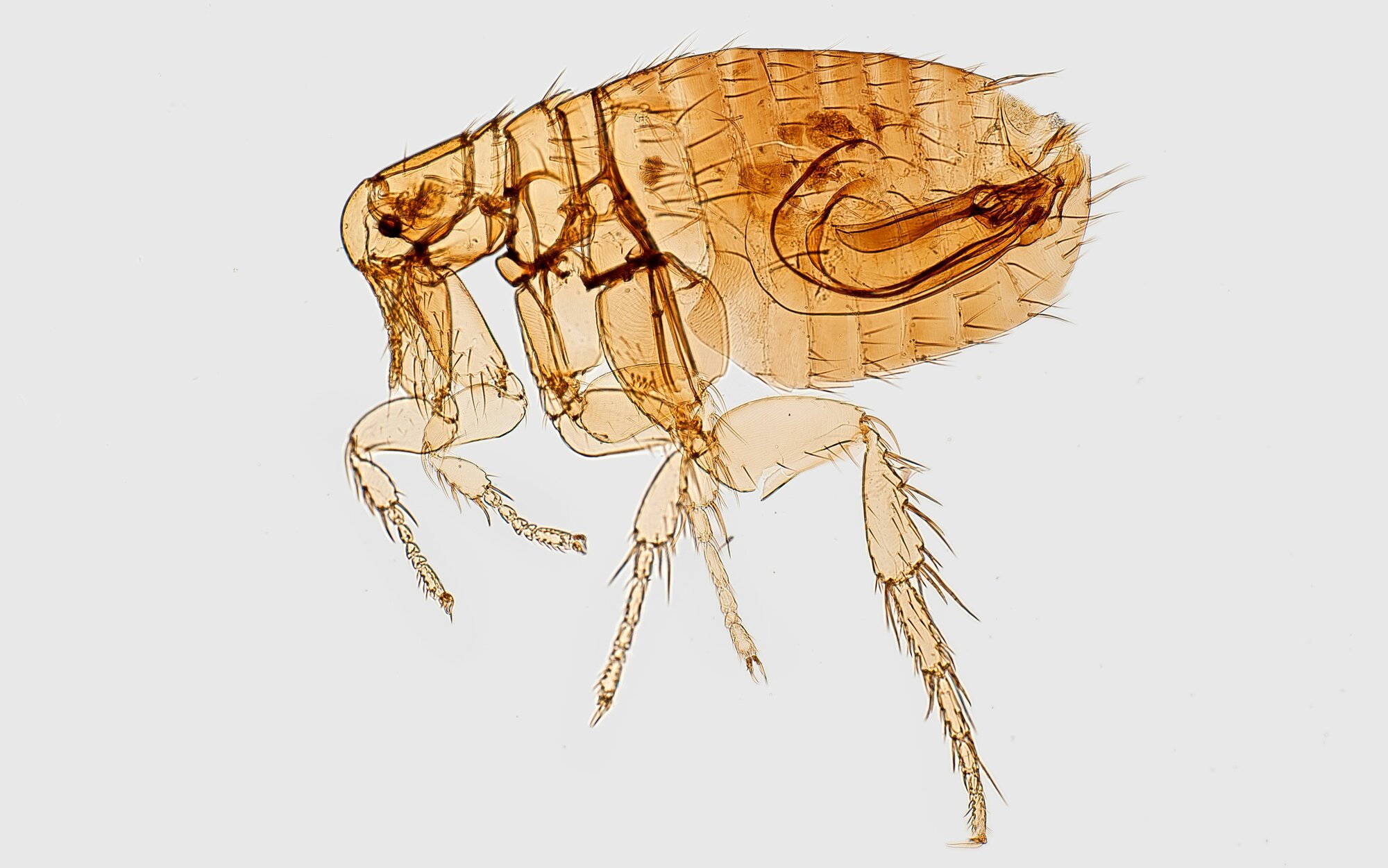
Fleas are small, wingless, bloodsucking insects that live on your cat's body and lay eggs in the surrounding environment. The species that affects cats and dogs is called Ctenocephalides felis felis.
The flea life cycle has four distinct stages, and understanding them is key to effective control. The vast majority of a flea population exists in your home environment, not on your cat.
- Egg: Adult fleas lay eggs on your cat, but these eggs fall off into the surrounding environment - your carpets, bedding, and furniture.
- Larva: The eggs hatch within 2-12 days into tiny, maggot-like larvae that burrow into carpets and fabrics, away from light.
- Pupa: The larva spins a cocoon to become a pupa. This stage is highly resilient and can lie dormant for months, even up to a year, waiting for the right conditions (humidity, warmth and the vibrations of a potential host) to hatch.
- Adult: The adult flea emerges from the pupa and must find a host for a blood meal. Only the adult flea lives on your cat. An adult can live for up to 100 days on a host but will only survive for 1-2 weeks without one.
This lifecycle is why a single flea treatment on your pet is often not enough to solve an infestation. A new wave of fleas can emerge from the pupae in your home long after the adult fleas on your cat have been killed.
What do fleas look like on cats?
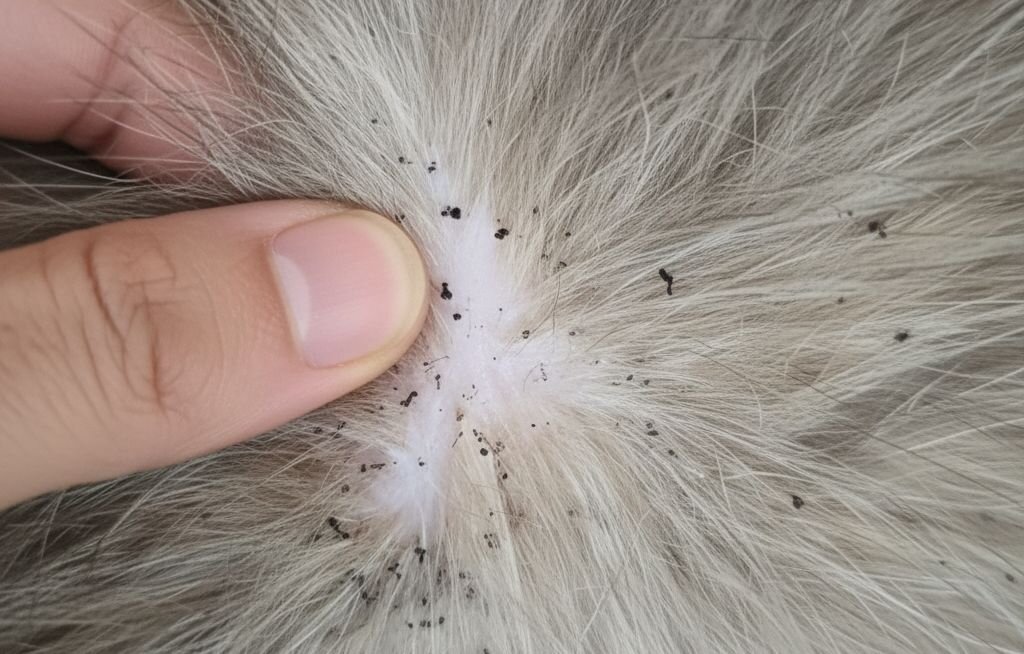
Contrary to what you might think, visualising flea insects crawling in your pet's fur is not the identifying sign of a flea infestation. Fleas are very small and difficult to see, due to their sneaky ability to weave intricately between your cat's fur shafts. This means that you may never see a single flea on your cat, depite a rampant infestation.
Instead, the visible component of a flea infestation is actually the 'flea dirt', a.k.a. the faeces of the flea, made from digested blood. Flea dirt has a brown, dirt-like appearance (see image) that sits within your pet's fur, and is usually observed most prominently on the chin in cats.
To determine if the dirt in your cat's fur is flea dirt and not just regular dirt, place some on a wet paper towel. If the dirt leaves a red residue on the wet paper, it confirms that it is dried blood and therefore flea dirt.
Signs of a flea infestation
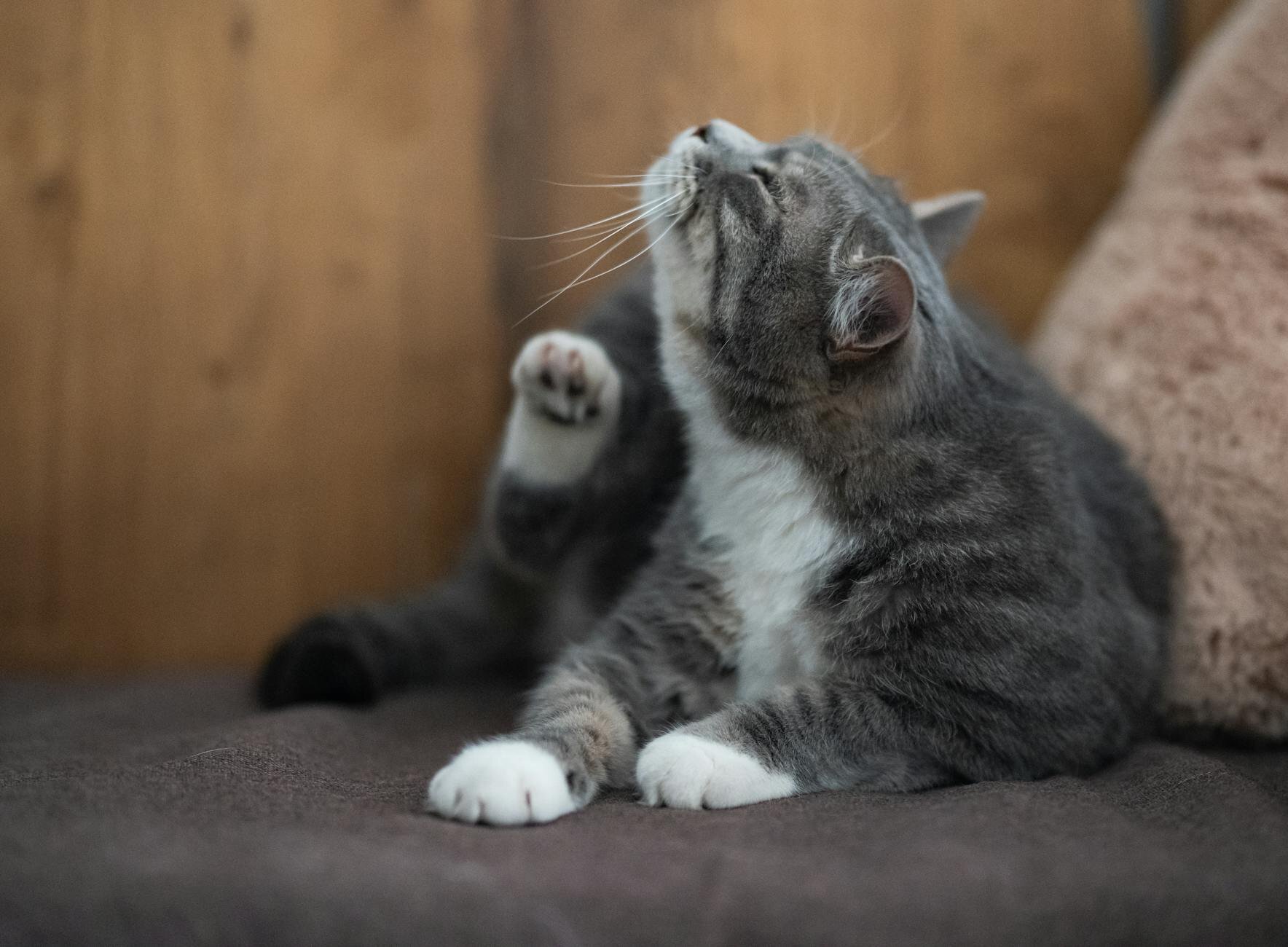
Common signs of a flea infestation include:
- Scratching (however some cats do not show obvious signs of itchiness from fleas)
- Biting or excessive licking and grooming
- Hair loss, usually secondary to scratching
- Presence of flea dirt, particularly under the chin
- Pale gums and lethargy if anaemia is present
Due to their skin-biting and blood-sucking nature, flea infestations can cause a number of secondary issues for your cat. These include allergic dermatitis, anaemia due to blood loss, transmission of tapeworm, and other diseases.
How do cats catch fleas?
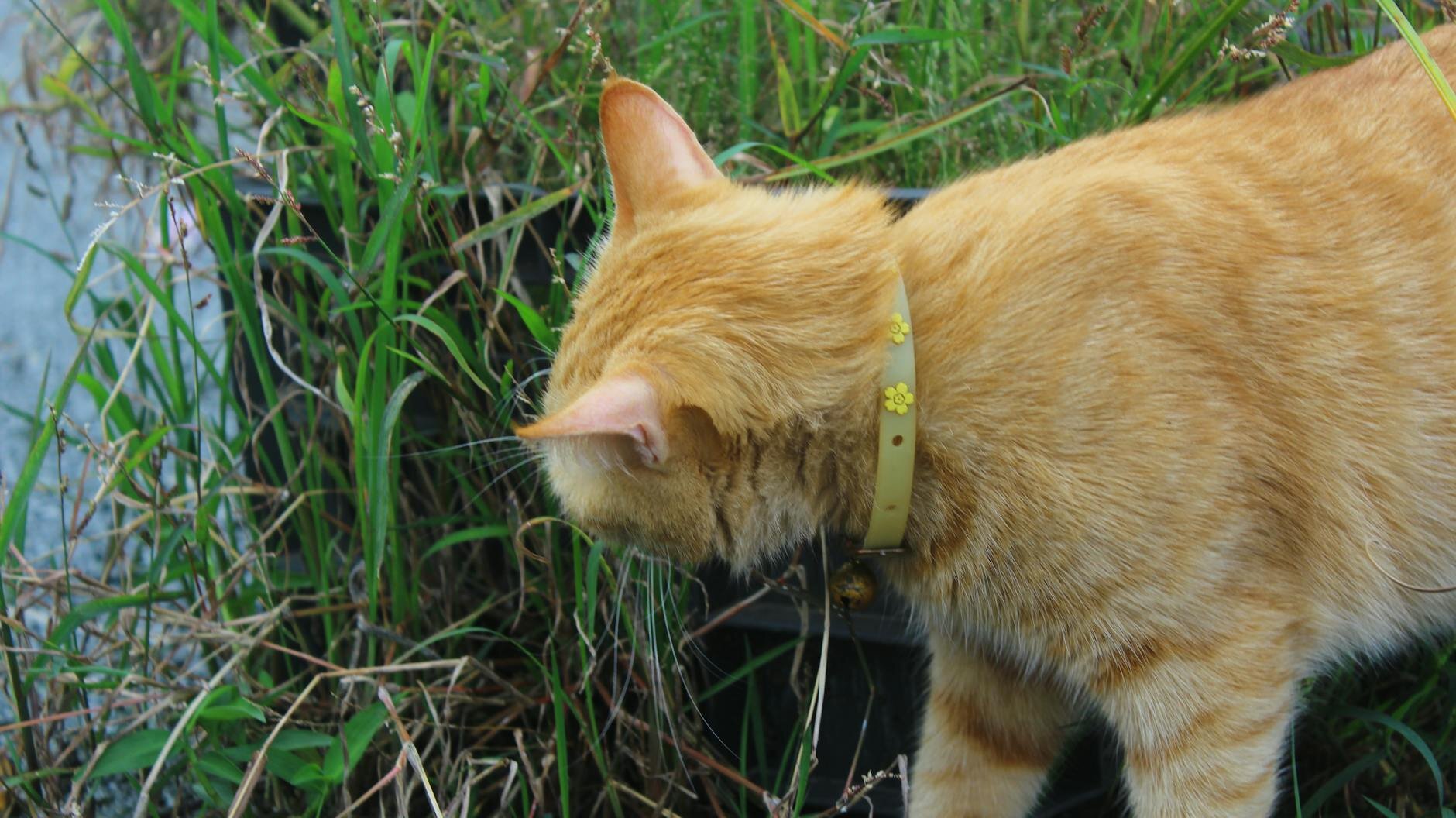
There are many ways cats may catch fleas. The first and most obvious way is by contacting other cats, dogs, or wildlife. If your cat has access to the outdoors, they will be in contact with other animals all the time - even if you don't see it!
However, indoor cats can also catch fleas from sources listed below.
- Humans as flea carriers
- Other pets
- Trips to places such as the vet, groomer, or daycare
- New homes and new furniture
- Pests such as rats and mice
For more information, read through our article about How do Cats Get Fleas?
How to check your cat for fleas
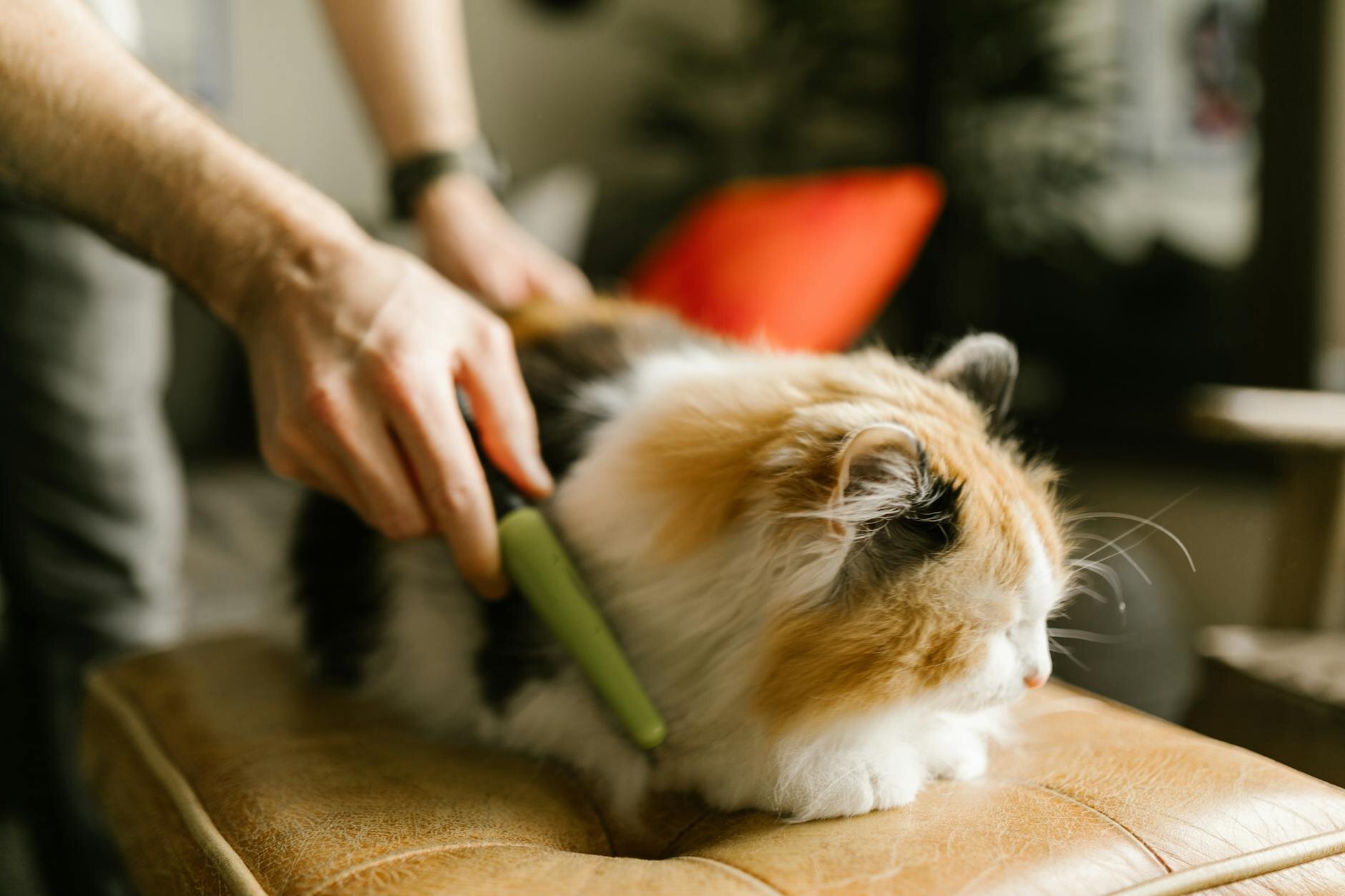
Due to the difficulty of seeing the fleas themselves, flea infestations are usually diagnosed by:
Using a specialised flea comb - this can help pick up fleas and flea dirt from your cat's fur.
If you aren't sure whether the dirt retrieved from the flea comb is flea dirt or just regular dirt, place some on a wet paper towel. If the dirt leaves a red residue on the wet paper, it confirms that it is dried blood and therefore flea dirt.
How to get rid of fleas on cats
If your cat has fleas, prompt and thorough treatment is essential. Unfortunately, eliminating fleas is not as simple as giving flea prevention your cat. You need to treat your home as well as your cat, and any other pets in the household. The primary steps are outlined below:
1. Treat your cat regularly
Immediate treatment with an effective vet-recommended flea product is vital. There are a number of different types of flea treatments in Australia, including spot-on treatments, tablets, and collars.
Capstar is the only oral flea treatment available for cats, and is very fast acting, starting to work within 30 minutes of dosing. However, it lasts only 24 hours, so is not suitable as a long-term flea control by itself.
Due to the potentially very long flea life cycle, regular, year round flea prevention is recommended, and it can reasonably take several months of regular flea control (on your cat and within the environment) to overcome a flea infestation.
Read more in our article How To Treat A Cat With Fleas.
Recommended flea preventatives
2. Treat the Environment
Flea eggs, larvae, pupae and adult fleas will drop off your pet into other areas of your home. Materials like bedding, toys and carpet are ideal living areas for the flea family. If your cat is suffering from fleas, about 95% of the total flea problem is likely to be in your house rather than on your cat.
Regularly treating the environment, as well as your pet, will wipe out the infestation much quicker. Gather all of your pet's bedding and material toys and place them in your washing machine on a hot wash with washing detergent. If you have a dryer, putting them on a hot drying cycle is also recommended. A thorough vacuum or steam clean of carpets and rugs is also important, focusing particularly around the areas where your cat sleeps, and also behind and under furniture.
3. Treat your other pets
If you own multiple pets, each pet should regularly be given flea treatment.
If you have dogs in the household too, read through our guide on How to Treat Your Dog for Fleas.
FAQs
Keep your cat healthy and happy by keeping their flea treatments up to date all year around. Your family, and household, will benefit immensely from diligently treating against this common bloodsucking parasite, which has the potential to make everyone's life miserable.
Remember to always follow the label as directed when it comes to medication and flea bombs. For example, you must never use a dog flea medication on your cat unless it is approved by the manufacturer for use in both species.
For best results, treat the environment and any other pets you own regularly. Treating your cat regularly with flea preventatives interrupts the lifecycle by killing fleas at different stages, preventing them from reproducing and perpetuating the infestation.
Articles recommended for you
Our vet authored guide to the benefits of feeding your dog fresh food plus tips and advice for introducing it into their regular menu.
See our guide to protecting your pet from parasites from our vet team.
Thinking of getting a fish? Check out our guide for setting up a tank and home care tips!
Looking to understand horse feeds better? This comprehensive guide covers feeding recommendations for horses of all ages and disciplines.
Does your pet suffer from anxiety? Check out our Vet-guide for treatment options to help your pet.
History
Our experts continually monitor the health and wellness space and we update our articles when new information becomes available.
Thu 9 Oct 2025
Edited by Dr Gillian Hill BVSc (Hons)Dr Carla Paszkowski BVSc (Hons)
Veterinarian
Dr. Carla graduated from the University of Queensland in 2013 with a Bachelor of Veterinary Science and worked for a number of years in small animal clinics across South East Queensland. While Carla enjoys most facets of clinical veterinary work, she holds a special passion for feline medicine, pocket pets, and nutrition.

